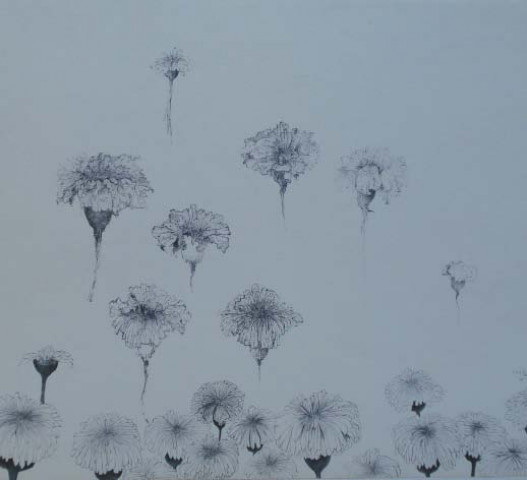Waves and Particles: Newton’s theories take on a new face
Artists use ink, helicopters, sandy beaches to explain wave-particle duality.

Noor claims her inspiration was a wooden helicopter she used to play with as a child. “My work revolves around my helicopter and everyday things like shoe shine and eggs that we give no importance to,” she explained. “Take mirrors for instance, we glance at our reflection so often but never really notice the mirror itself.”
Her work was a tedious 18-stage development, using a technique called the Vandyke Print, involving photosensitive chemicals and etching. Her prints start with commonplace items and culminate in the form of her beloved helicopter in the last print.
Her message was simple - all energy and particles are the same, be it something that holds a lot of importance for you or something you don’t even notice. “They are all formed by the same particles and hold the same kinetic energy.”
Iqbal, working in pen and ink, takes on a more soul-searching approach to the theme. His favourite piece was the one titled ‘Myself’. “It was done in two stages, first I just threw down all these images and then worked on bringing clarity and definition to them, it’s a depiction of the two parts of me.” He claims that like all matter has two phases, particulate and energy waves - all personalities have two dynamics as well.
“The conscious faculty of mind and stream of emotions constituting our personality are variable in nature,” he said in their joint statement. “Its interplay is reflected in our everyday life, we couldn’t put ourselves in a single bracket. Love, fear, anger sometimes could dominate in one’s personality.” “You see the two aspects of society as well,” Iqbal elaborated, “in the intellectual and working class, we need both the classes to come together in order to be productive - like waves and particles.”
According to Iqbal there was no need for any similarity in his and Noor’s work. “Our interactions were enough, our own interpretations came out.”
Published in The Express Tribune, February 15th, 2011.



















COMMENTS
Comments are moderated and generally will be posted if they are on-topic and not abusive.
For more information, please see our Comments FAQ